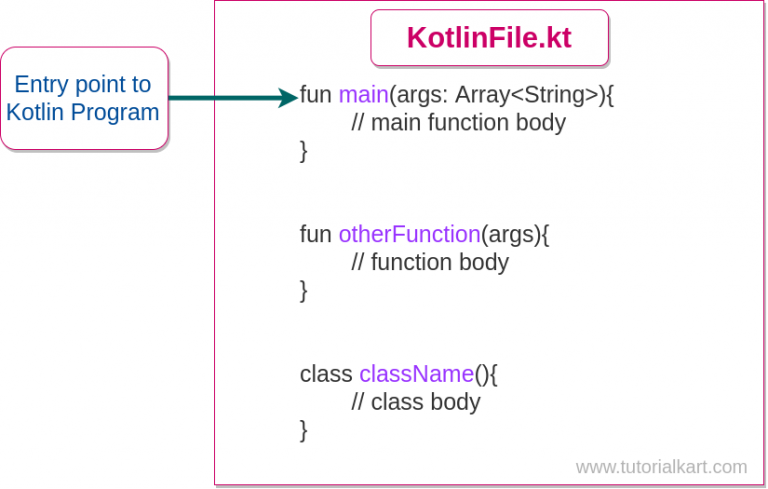

Private - The declaration marked with private are only available inside the same Kotlin file. Other modules can be a library or helper application supporting the main application. During project development we can have multiple modules within the same project. A module means the set of Kotlin files compiled together. Internal - Internal marked declarations are visible inside the same module. They can be used in different files, classes, packages, etc. It means that the declarations are visible everywhere. Public - It is a default modifier and can be omitted.

They are present directly inside any Kotlin file.įor top-level fields, the different visibility modifiers mean: Top-level fields are those that are placed outside the classes or interfaces. The visibility modifiers have different meanings according to the place where they are placed. It means if we haven't specified any visibility modifier for a class, function, property etc then by default the compiler will consider it as public. The default visibility modifier is public. There are four visibility modifiers in Kotlin: Getters have the same visibility as the property. In Kotlin, visibility modifiers can be applied to classes, constructors, objects, interfaces, functions, properties, and their setters. Visibility modifier keywords restricts the use of classes, functions, properties etc and states whether they are available in their subclasses, in other files, classes, other packages or not. Access modifiers or visibility modifiers are used to define the scope of a class, function, field, interface etc. A private class or a private interface is also only accessible by its data members and so on.In this tutorial, we will cover visibility modifiers or access modifiers in Kotlin. For example, a private package is accessible only in that particular file. When you declare something with a private modifier, it will then be accessible in its immediate scope. Now let’s take a closer look at all four types. And just like in other object-oriented languages they can be used in places like the class header or in a method declaration. Visibility modifiers are used to limit the usage of a variable, method or class being used in an application. Public is the default if no other visibility modifier is set. Kotlin has four types of visibility modifiers: private, protected, internal and public. In Kotlin, you can’t set the visibility modifier of getters since they will always take that of the property. In Kotlin, visibility modifiers are keywords that set the accessibility, or visibility, of classes, objects, constructors, functions, properties, interfaces, and all of their respective setters. Welcome back to our series on Kotlin! In our last article, we looked at class & object in Kotlin and today we’ll cover the various types of visibility modifiers that are available to you in the Kotlin programming language.


 0 kommentar(er)
0 kommentar(er)
